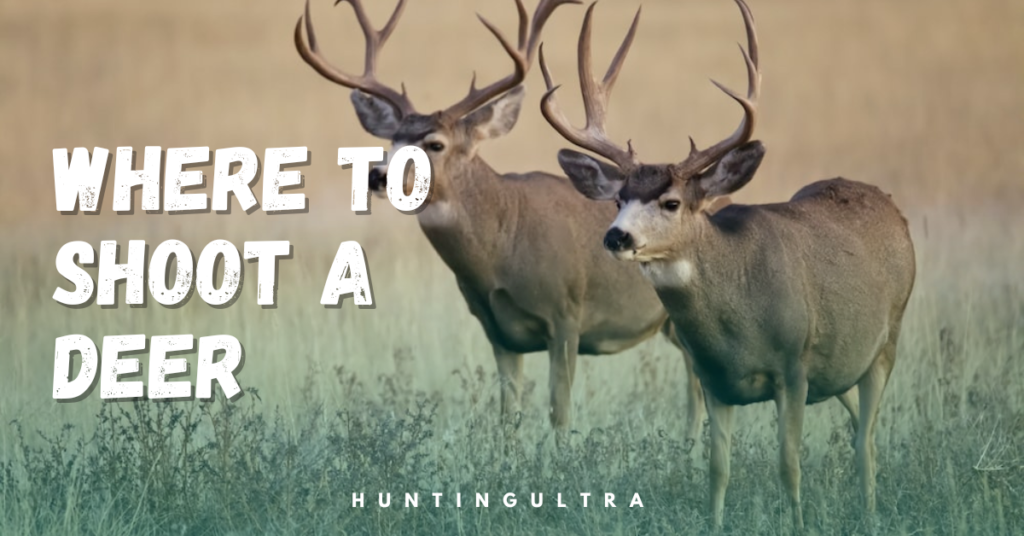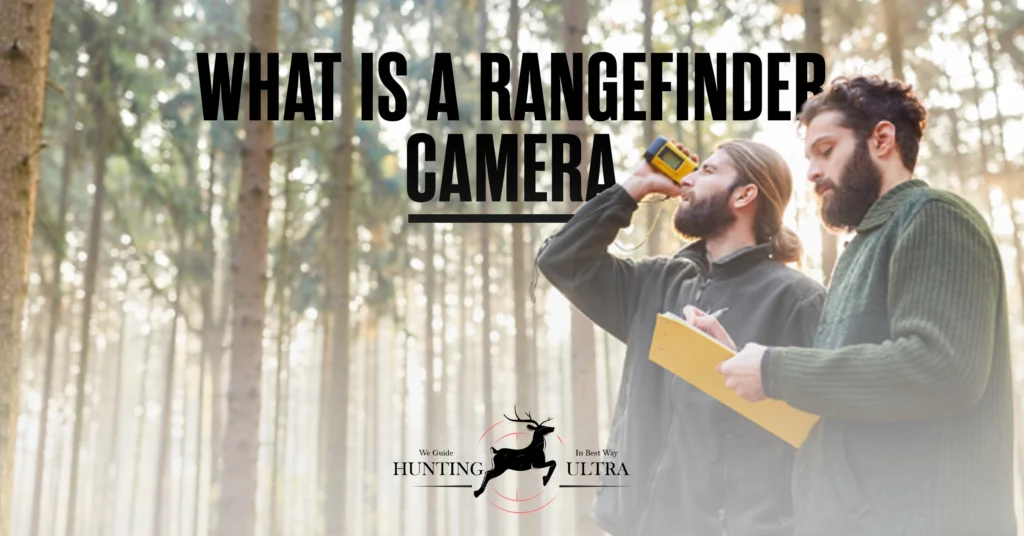When it comes to deer hunting, understanding where to shoot a deer for an efficient and ethical kill is a fundamental responsibility for every hunter. Proper shot placement not only ensures a quick and humane death for the deer but also minimizes meat damage, making the most of the harvest. In this comprehensive guide, we will delve into the art of optimal shot placement for deer hunting, covering various scenarios, shot angles, and considerations for both bowhunters and firearm hunters.
Shot Placement Basics for Where to shoot a Deer: Aiming for the Boiler Room
1. Broadside Shots: Targeting the Crease
When a deer is positioned broadside, the ideal aim point is just below the halfway mark on its chest. By following the front leg up the deer’s body, hunters can identify the “crease” formed by the deer’s shoulder. This spot allows for precise shot placement, ensuring penetration through the vital organs—specifically, the heart and lungs.
2. Understanding the Vital Area: Heart and Lungs
The heart and lungs are the primary targets for most hunting scenarios. Penetrating these vital organs leads to massive blood loss and a quick death. This shot placement results in swift kills with minimal meat damage, making it a preferred choice for ethical hunters.
3. Minimizing Meat Damage: Achieving Swift Kills
Precise shot placement is crucial for minimizing meat damage. By aiming for the crease, hunters increase their chances of hitting the tallest and widest part of the lungs. This allows for a slight margin of error—missing slightly forward may still result in hitting the vital “V” in the shoulder, while missing slightly back may still hit the back of the lungs and liver.
Shot Angles: Quartering Away and Quartering To
1. Quartering-Away Shots: Adjusting the Aim Point
When a deer is quartering away from the hunter, the aim point needs to be adjusted to ensure the shot passes through the vital area of the heart and lungs. Hunters should aim for the orange dot, following the front of the offside foreleg up the body. It is important to avoid extreme angles that may compromise shot effectiveness.
2. Quartering-To Shots: Challenges and Opportunities
Quartering-to shots pose challenges, especially for bowhunters. The risk of hitting the guts or failing to penetrate the shoulder bones makes this shot angle less favorable. However, rifle hunters using quality bullets can still achieve effective shot placement by aiming into the frontside shoulder, ensuring the bullet exits the rib cage for a quick and ethical kill.
Frontal Shots: Precision and Close Ranges
1. Effective Frontal Shot Placement
Frontal shots provide a highly effective but narrower target area. When a deer is facing directly toward the hunter, the aim point is between the shoulders, slightly below the halfway mark on the chest. This shot placement, when executed properly, typically results in deer dropping quickly. However, frontal shots should only be taken at close ranges due to the narrower target area.
2. Considerations for Bowhunters
Bowhunters who choose to take frontal shots should consider specific equipment and techniques. Opting for heavy arrows with a high front-of-center (FOC) balance and durable fixed-blade broadheads is crucial. Additionally, bowhunters must have their setups properly tuned and be able to consistently shoot tight groups to ensure accurate shot placement.
Bowhunting Considerations: Vital V vs. Crease
1. Aiming for the Vital V: Advantages and Challenges
Some bowhunters advocate for aiming at the vital “V” in the shoulder, where there are no bones except for the ribcage. This shot placement, when executed accurately, results in swift and lethal kills. However, it requires heavy arrows, stout draw weights, and durable fixed-blade broadheads. Aiming for the vital V offers a smaller margin of error and requires precise marksmanship.
2. Opting for the Crease: Increasing the Margin for Error
Alternatively, many experts recommend aiming for the crease behind the shoulder. By doing so, bowhunters increase their margin for error. The crease provides a larger target area, allowing for slight deviations in shot placement while still hitting the vital organs. This approach offers more forgiveness and is recommended, especially for beginners or those seeking a larger margin of error.
Shooting from Elevated Positions: Treestand Considerations
1. Adjusting for Downward Angles
When shooting from a treestand, hunters encounter a downward shooting angle. Adjusting the aim point becomes crucial to ensure proper shot placement. For close shots at a steep angle, hunters should aim slightly higher, allowing the arrow or bullet to pass through both lungs. It is essential to avoid aiming too high, as it may result in an undesirable high spine shot.
2. Practicing Shot Placement from Elevated Platforms
Mastering shot placement from elevated positions requires practice. Hunters should utilize 3D targets and simulate treestand conditions to develop an instinctual understanding of holding positions for different shot angles. Practicing in a controlled environment enhances marksmanship and ensures accuracy when it matters most.
Firearm Considerations: Beyond the Boiler Room
1. High-Shoulder Shots: Shock and Awe with Meat Damage
Firearm hunters have additional options for shot placement due to the higher energy of rifle bullets. High-shoulder shots deliver an immediate shock-and-awe effect, often snapping the spine and breaking bones. However, this shot placement can cause significant meat damage, affecting the shoulder, neck, and upper backstrap.
2. Head Shots: Instantaneous Kill with Minimal Meat Loss
Head shots offer the advantage of an instant and humane kill. When the brain is directly hit, the deer dies instantaneously, with minimal meat loss. However, head shots require exceptional precision, as the brain is a relatively small target. Head shots should be reserved for highly skilled and experienced hunters.
3. Neck Shots: Targeting the Spinal Cord
Neck shots can provide massive shock to the spinal cord and vertebrae, leading to a quick and ethical kill. While meat damage is minimal, the vital area for neck shots is small. Misplaced shots may result in paralysis rather than an immediate kill. This shot placement requires exceptional accuracy and should only be attempted at close ranges.
Frequently Asked Questions
Where is the best shot on a deer?
The best shot on a deer is a heart and lung shot. This shot will cause the deer to die quickly and humanely. The heart and lungs are located in the center of the deer’s chest, just behind the shoulder. If you are using a rifle, you should aim for the center of the chest. If you are using a bow or crossbow, you should aim for the slightly lower, center of the chest.
Can a deer survive a shoulder shot?
A deer can survive a shoulder shot, but it is not likely. The shoulder is a large muscle group, and it can take a lot of damage from a bullet or arrow. If a deer is hit in the shoulder, it may still be able to run away, but it will likely die from its injuries within a few hours.
How can meat damage be minimized?
Meat damage can be minimized by making a clean shot. A clean shot is a shot that penetrates the vital organs of the deer and does not cause any unnecessary damage to the body. When making a shot, it is important to aim for the center of the chest and to use the correct amount of force.
What is the best time of day to hunt deer?
Deer are most active in the morning and evening, so these are generally considered the best times of day to hunt them. However, deer can be active at any time of day, so it is important to be prepared and to scout your hunting area to see when deer are most likely to be present.
Final Verdict
Mastering optimal shot placement is essential for ethical and successful deer hunting. By understanding the different scenarios, shot angles, and considerations for bowhunters and firearm hunters, hunters can increase their chances of humane kills, minimize meat damage, and enhance their overall hunting experience. Responsible hunting practices, continuous improvement in marksmanship, and adherence to ethical principles are key to ensuring a rewarding and sustainable hunting journey.



